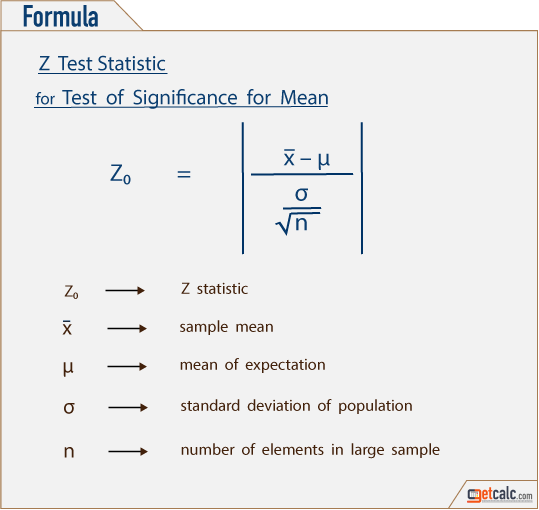
the effect is exactly zero), as well as the more commonly needed composite nulls such as μ 1 ≤ 0, a proper Z table should contain both types of cumulative probabilities. Since a table of Z scores can be used to judge either a point null hypothesis (e.g. Z tableĪ Z table contains tabulated values of the Z distribution and their corresponding quantiles, or percentages. An online Z calculator can perform the arithmetic for you quickly and easily. Using the above formula one can easily convert a raw score from a normal distribution with known or estimated mean and standard deviation to a standard score.

The formula for calculating a z score from a raw score from is given by the simple equation: Due to Z values being standardized scores they are useful in comparing measurements across different scales which is often needed in both scientific and applied disciplines. They are also used in process control and quality assurance applications (e.g. Most commonly they are used in a Z-test of significance as well as confidence interval calculations. Z values have numerous applications in statistical inference and estimation. Z distribution) which is fully defined by its mean and standard deviation of zero and one, respectively. Standard refers to the fact that they are computed against the standard normal distribution (a.k.a. The z-score, also referred to as standard score and z-value is a signed real valued dimensionless quantity which indicates the number of standard deviations by which a given observed data point is distanced from the mean or expected value of a distribution. It uses the inverse CDF to calculate Z scores from p-values. Our z score calculator uses the CDF of the Z distribution to find the area under the standard normal curve above, below, between, or outside regions defined by given scores. These and other qualities make it a useful tool in statistics and probability calculation of various sorts. The entire distribution density sums to 1 and just like other normal distributions it is fully defined by its first two moments. Similarly, just over 95% of its probability density falls between -2 and +2 standard deviations. For example, 68.27% of values would fall between -1 and 1 standard deviations of a Z distribution. The fact that the distribution is standardized means that the quantiles are known, and that area between any two Z scores is also known. The Z distribution with key quantiles is shown on the graph below:

The Z distribution is simply the standard normal distribution of the random variable Z meaning it is a normal distribution with mean 0 and variance and standard deviation equal to 1. Simply select "Z score from P" and enter the p-value threshold in the field to obtain the standard score defining the critical region. The z statistic calculator can also be used in inverse - to obtain a Z critical value corresponding to a given probability.

The cumulative probabilities are calculated using the standard normal cumulative distribution function (CDF). The output also contains probabilities calculated for different areas under the standard normal curve which correspond to a one-tailed or two-tailed test of significance. If the variance is known instead, then the standard deviation is simply its square root.

The z score calculator can be used to derive a z statistic from a raw score and known or estimated distribution mean and standard deviation.


 0 kommentar(er)
0 kommentar(er)
